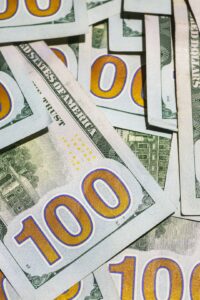Introduction to Forex Trading with Python: A Beginner’s Guide
Forex trading, also known as foreign exchange trading, is the process of buying and selling currencies with the aim of making a profit. It is a decentralized market where currencies are traded 24 hours a day, five days a week. With the advancement of technology, trading forex has become more accessible to individuals, and many traders are now using automation to execute their trades. One popular tool for automating forex trading is Python, a versatile programming language that is widely used in the financial industry. In this beginner’s guide, we will explore the basics of forex trading with Python and how you can get started.
Why Use Python for Forex Trading?
Python is a powerful language for data analysis and automation, making it an ideal choice for forex trading. It has a wide range of libraries and tools that can help you analyze market data, develop trading strategies, and execute trades. Python’s simplicity and readability also make it a popular choice for beginners who are new to programming.
Getting Started with Python for Forex Trading
To get started with forex trading in Python, you will need to install Python on your computer. You can download the latest version of Python from the official website and follow the installation instructions for your operating system. Once Python is installed, you can use the pip package manager to install additional libraries that are necessary for forex trading, such as pandas, numpy, and matplotlib.
Understanding Forex Market Data
Before you start trading forex, it is important to understand the different types of market data that are available. The most commonly used types of forex data are price data, which includes the opening, closing, high, and low prices for a currency pair, and volume data, which represents the number of trades that have occurred. There are also other types of data, such as economic indicators and news events, that can affect currency prices.
Fetching Forex Data with Python
Python provides several libraries that can be used to fetch forex data from various sources, such as online brokers and financial data providers. One popular library for fetching forex data is the OANDA API, which provides real-time and historical currency exchange rates. You will need to sign up for an account with OANDA and obtain an API key to use their API in your Python code.
Analyzing Forex Data with Python
Once you have fetched the forex data, you can use Python to analyze it and gain insights into the market. Python’s pandas library provides powerful tools for data analysis, such as data manipulation, visualization, and statistical analysis. You can use these tools to calculate technical indicators, such as moving averages and relative strength index (RSI), and plot them on a chart to identify potential trading opportunities.
Developing Forex Trading Strategies with Python
After analyzing the forex data, you can develop trading strategies based on your analysis. Python’s simplicity and flexibility make it easy to implement and test different trading strategies. You can use Python’s built-in libraries, such as numpy and scipy, to perform calculations and simulations, and backtest your strategies using historical data to see how they would have performed in the past. This will help you evaluate the profitability and risk of your strategies before executing them in real-time.
Executing Forex Trades with Python
Once you have developed and tested your trading strategies, you can use Python to execute your trades automatically. Python provides libraries, such as the OANDA API or the MetaTrader API, that allow you to connect to your broker’s trading platform and place trades programmatically. You can set up your trading system to monitor the market, generate trade signals based on your strategies, and execute trades automatically without any human intervention.
Conclusion
Forex trading can be a profitable venture if you have the right tools and knowledge. Python is a powerful programming language that can help you automate your forex trading and make informed trading decisions. In this beginner’s guide, we have explored the basics of forex trading with Python, from fetching and analyzing market data to developing and executing trading strategies. With practice and continuous learning, you can harness the power of Python to become a successful forex trader.





